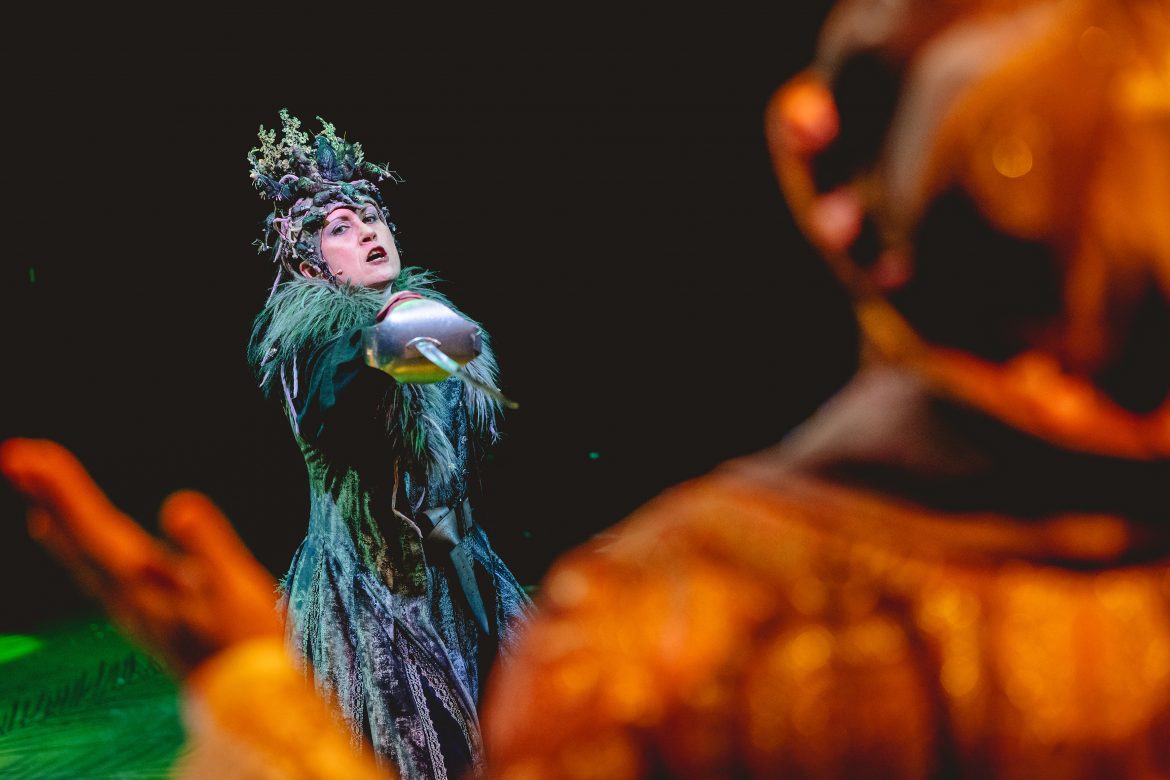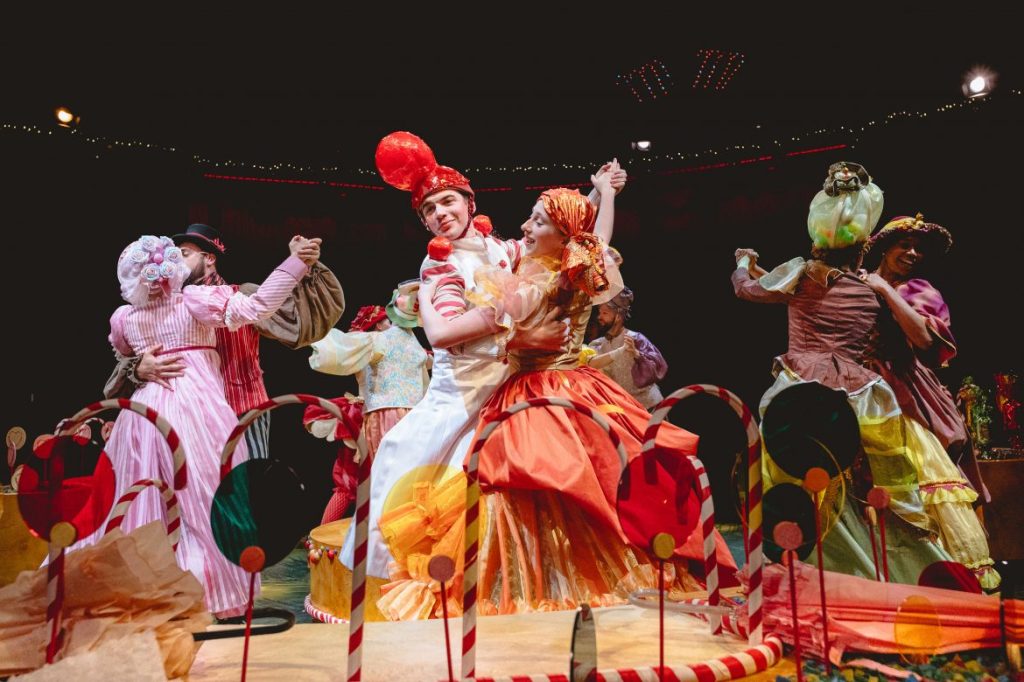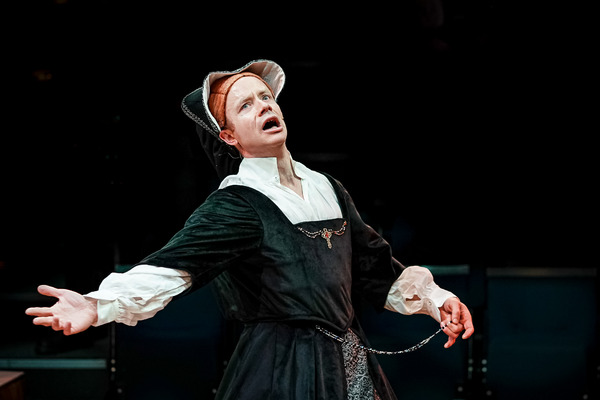It was an unusual decision for the New Vic’s Christmas production to emulate a ballet story close to the original ballet. But a couple of audacious decisions makes The Nutcracker one of their most successful Christmas productions.
One sign that the New Vic does something right with its Christmas production: there’s so much demand it runs to the end of January. That’s also convenient for me because it’s something on my calendar in an otherwise empty month. Catching The Nutcracker at the end of its run, I was hearing a lot of praise, but there was a difference with Theresa Heskins’s latest winter play. Usually there’s a substantially different angle on the source material clear from the outset. This time, it’s not so obvious. There’s still ballet – in fact, in order to have an ensemble who can do the a ballet needed it’s almost entirely a new cast. The original music by Tchaikovsky has been kept. Is this not just a repeat of the famous ballet piece?
Not really. This piece can perhaps be described as how The Nutcracker would have been written as a theatre piece with ballet in, as opposed to a pure ballet production. Most ballet productions have plenty of set pieces dances, with the greatest ones having legendary music. But as far as the storyline is concerned … it doesn’t half go on a bit. We all love the tunes of the Arabian Dance, Russian Dance, Chinese Dance, Dance of the Reed Flutes and Waltz of the Flowers, but it’s a guaranteed fail of the “get on with it test”. And some bits of the story in act one are just … weird. Including, for some reason, a battle between gingerbread men and the terrible evil mouse queen. Theresa Heskins respond to these two challenges with two audacious decisions – and they pay off.
 Firstly, the weird mouse battle. The easy and safe solution is to just cut it. Heskins not only keeps it, but ups its prominence in the story. You might think that nobody’s going to buy into a story where the villain is a mouse, but we’re in land where everything in made of confectionery. Remember, those little buggers eat everything. The first mention of the mouse queen is in the real-world opening scene, where Uncle Drosselmeyer tells the tall tale of the mouse queen’s threat to the sugar plum fairy. The setting is now an unsettled family forced to relocate by war (a nod to Ukraine families currently in Stoke), and Marie has an older sister who died, but other than that, the Act I story is reasonably faithful to the Act I of the ballet.
Firstly, the weird mouse battle. The easy and safe solution is to just cut it. Heskins not only keeps it, but ups its prominence in the story. You might think that nobody’s going to buy into a story where the villain is a mouse, but we’re in land where everything in made of confectionery. Remember, those little buggers eat everything. The first mention of the mouse queen is in the real-world opening scene, where Uncle Drosselmeyer tells the tall tale of the mouse queen’s threat to the sugar plum fairy. The setting is now an unsettled family forced to relocate by war (a nod to Ukraine families currently in Stoke), and Marie has an older sister who died, but other than that, the Act I story is reasonably faithful to the Act I of the ballet.



 The John Godber Company has been one of the most determined companies to perform on in any way they can, although it’s fair to say they were at a bit of an advantage here. With the Godber family themselves taking on so many roles over the years, it was an easy matter to put on a family event with Sunny Side Up. I would like to have told you about that, but the performances were very popular and sold out quickly. However, not all John Godber performances are family affairs, at to get back into the swing of things this year, they put on one of their largest productions to date at Hull Marina.
The John Godber Company has been one of the most determined companies to perform on in any way they can, although it’s fair to say they were at a bit of an advantage here. With the Godber family themselves taking on so many roles over the years, it was an easy matter to put on a family event with Sunny Side Up. I would like to have told you about that, but the performances were very popular and sold out quickly. However, not all John Godber performances are family affairs, at to get back into the swing of things this year, they put on one of their largest productions to date at Hull Marina.
 Jules Verne’s famous circumnavigation-themed novel is a tough to to adapt faithfully. So detailed is the story that it’s next to impossible to capture the train-by-train-by-boat-by-train-by-elephant etc. epic in that level of detail. In fact, one of the biggest oddities is that some people consider the most accurate adaptation to be the 1980s children’s series Around the World with Willy Fogg. Even though all the characters are animals and they introduced extra characters such as the sneaky master of disguise wolf Transfer who tries and fails to sabotage the journey every episode, the 26-episode format meant the whole journey could be captured very faithfully. But this is theatre, where you have two and a bit hours, trains and boats on stage are not an option, and getting a lion to play Mr. Fogg is unworkable for several reasons.
Jules Verne’s famous circumnavigation-themed novel is a tough to to adapt faithfully. So detailed is the story that it’s next to impossible to capture the train-by-train-by-boat-by-train-by-elephant etc. epic in that level of detail. In fact, one of the biggest oddities is that some people consider the most accurate adaptation to be the 1980s children’s series Around the World with Willy Fogg. Even though all the characters are animals and they introduced extra characters such as the sneaky master of disguise wolf Transfer who tries and fails to sabotage the journey every episode, the 26-episode format meant the whole journey could be captured very faithfully. But this is theatre, where you have two and a bit hours, trains and boats on stage are not an option, and getting a lion to play Mr. Fogg is unworkable for several reasons.